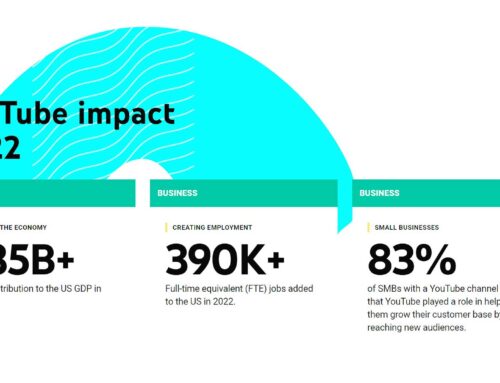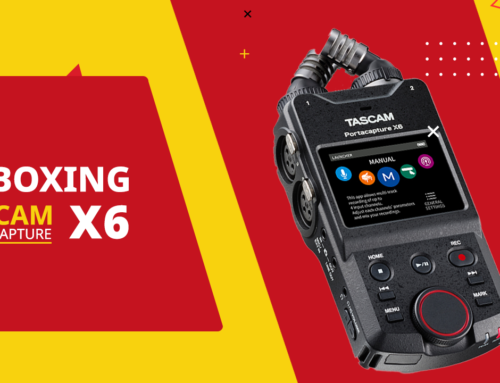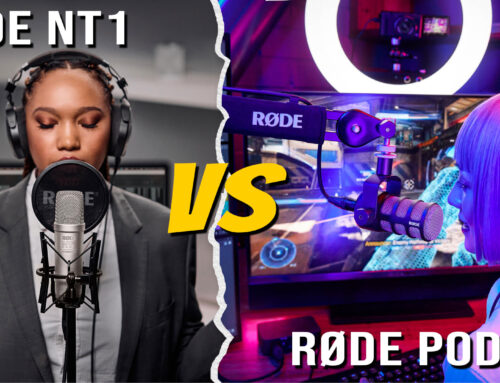Podcast
Transcription:
Hello internet fans, Ryan Perry here. Simple Biz Support. Today is July 6th. It is our first Social Media Wednesday podcast in the second half of 2016, and I have Sarah Giometti with Provaro Marketing. Sarah, we have a very special episode this week.
Sarah Giometti: We do, we do. It’s a very special episode. It is surprisingly our 100th episode of doing this.
RP: That means we’ve got over two years at 52 weeks. We missed a couple of weeks here and there that’s… So we’ve got two-and-a-quarter, two-and-a-third, something like that, years that we’ve been doing this and it really doesn’t seem like it’s been that long that we’ve been doing this, so time does fly.
SG: It does, it does. It doesn’t seem like it’s been two years but it has. I went back and counted, just to make sure.
RP: Which is a good thing because my math isn’t always that good. In the entertainment industry, hitting 100 episodes is a huge milestone, very proud of us for sticking with it. Coming up with new content on a regular basis every single week has been a struggle at times and… But we’ve persevered and I think we’ve had some really great shows. I think there’s a lot of great content that we’ve been able to share with the audience. I’m really proud of what you and I have been able to accomplish over these 100 episodes.
SG: Same here. It’s been eye-opening to do a weekly show. It’s not something… I don’t think either of us really thought through the undertaking, and it’s just like another networking meeting that begin every single week.
RP: It just seemed like a fun idea. Why not do it?
SG: But it has been great ’cause it forces us to think outside the box sometimes and bring things to get out of our Tech Speak that we sometimes do, which has helped me in my business, and I’m sure it’s helped you in talking to prospective clients and clients in changing the language to real language. So hopefully, it has helped our viewers as much as it’s helped us.
RP: I think it has. Before we go too far down the path of history and all the great things, we also need to move forward at the same time with a new episode. And I’m excited about this episode because it’s my favorite subject matter, which is video. And how you can use video, three different ways you can incorporate video into your marketing strategy for social media.
SG: Yes. Video, as you are well aware and hopefully our viewers are aware, video is becoming more and more prominent in online marketing and especially in social media. You’re seeing Facebook giving preference to native videos, Instagram extended the length of their videos, so it’s starting to pop up. People are watching it more and more. We are very visual people so it’s not a huge surprise that video and photos are popular. And with video, people can relate to you in video ’cause you come through, they can see what you’re like, what your personality is, if they feel like you guys will be a good match. A lot of that, you can portray in video, even in a short video. So, we both know it’s going to be even more powerful just as time goes on.
RP: Right. And one of the things I love about video is it humanizes this whole digital marketing world that we live in, where there’s a lot of distance between just people in general. Video is one of the ways that you can kinda bring people together, but still digitally in that digital environment. That’s one of the biggest things that I love about video, and I understand that not everybody’s comfortable using video, and there’s a lot of different ways that you can use video where you are not necessarily in it. But I think the most powerful use of video, especially for small business owners, is just exposing people to information. Education is one of my big things. I know that’s not on the top three lists that we’re going to talk about today. So, why don’t we jump in to that ’cause otherwise I can go off on all these different tangents about video.
SG: Yeah, video definitely. Yeah, if you’re afraid of being in front of video… I’m not the biggest fan of being in front of videos, so we’ll use me as a guinea pig. Ryan does it all the time. He’s super comfortable in it. I usually do several takes. My first few takes I know were just going to be trashed. And it’s just so I get used to talking whatever the script is, whatever the subject is, I want to talk about. But there are also ways to do a video where you are not even in it. You’re just talking but you’re behind the scenes and you’re showing things. So, think outside the box when it comes to video if you don’t want to actually sit in front of a camera. But to get into the top three things that we’re going to talk about today, the first one we want to talk about is video length and experimenting with the length of the video. Every platform has a different length of time. Facebook is really long at 120 minutes. I probably would not recommend going anywhere near that. Whereas, Instagram just extended to 60 seconds. Twitter’s 30 seconds. I have a list so I have ’em all right. Snapchat’s 10 seconds and Vine is six seconds. And so you want it within those limits for whatever platform you’re working on and you’re putting… Whatever platform you’re doing videos on.
SG: You want to experiment with how long the video is and what people are watching. If they are watching a shorter one versus a longer one, and this is especially true on Facebook where you’ve got a lot of time that you can actually use. That’s where you can experiment with 60 seconds to three-to-five minutes. Five is really long, and so think… You can watch how much people are watching and if they’re watching the whole video, and play around with that so you can kinda find the sweet spot of video length.
RP: Yeah, and I don’t know about all the different social media platforms within YouTube that you can actually look at the analytics and see when people are dropping off. Are they only watching 30 seconds, a minute, two minutes of your video? And the idea is to kind of pinpoint when people are starting to drop off. That way, you can self-critique your content and go, “Okay, people consistently seem to drop off at this point. Is it just that I’m repeating myself? Is it that the content’s just too long? I don’t have any new information,” and then re-evaluate, “Okay, well, if everybody seems to be dropping off at two minutes, how can I shorten the video?” And it’s kind of like the old Twitter thing, if you will. When Twitter came out at 140 characters, it was like people were mind-blown that you could actually convey something in 140 characters. And what it did is it forced marketers and individuals to really be concise about their message. And I love that with the video and the time is try and be really precise so that you can fit it into. If you can take two minutes of content, fit it into a minute, that’s going to be beneficial all the way around.
SG: Right. And this totally takes us into our second tip of using video for social media is – focus on one topic. This will help you be concise in playing around with those video lengths. If you’re only talking about one thing and even bullet point out three to five bullet points of that singular topic, then it’ll help you be concise. And just because you’re allotted a certain amount of time doesn’t mean you need to take it all up. If you can talk about one topic in 25 seconds, you don’t need to stretch it out to 60 just because you’re allowed to have 60. People will appreciate being brief and to the point. And also, by keeping it to one topic, that other topic you were going to talk about is your second video. So now you have additional content. So it’ll help you to be concise and get your message across clearly is by keeping to one topic and then playing with the length of time.
RP: Right. And a couple of things I’d like to add on to that. One is that a lot of business owners, we get caught up in the metrics. How many visitors do I have? How many people like my stuff? How many people shared my stuff? And when it gets to videos, it’s how many views do I have? For me, I’m really not as concerned about the count, the number of views that I have, as I am about the quality and the specific content that I’m sharing. My big thing when it comes to marketing is how can we relate to one person? The more relatable I can be to that one person, the more likely they’re going to be to convert. And so for me, the number one number that I’m looking at is conversion. So if instead of making one video that talks about, let’s use a dentist as an example and teeth whitening. If you only make one video that talks about all the different things you could talk about with teeth whitening, one, it’s going to be terribly long because there’s so many different things you could talk about when it comes to teeth whitening.
RP: Number two, it’s really not relevant to one person. You’re making it relevant to everybody. And if you’re going to talk about what’s relevant to me five minutes into the video, I’m going to be bored and left. And then number three, that you mentioned on is if I just create this one big video, I don’t have anything else to talk about. So be very relevant to one specific person. That persona, we’ve talked about personas in the past, and just discuss their one issue that they have, and do it not so wide but very deep with knowledge. And if that deep knowledge only goes two minutes, great. If it goes five minutes but it’s relevant and deep knowledge, then go five minutes. And again, play with it a little bit to see where that sweet spot is with time. And then I had another thought and I lost it, so you’re going to have to take over.
SG: One thing is if your video is over those time limits, YouTube doesn’t have… I don’t know. Does YouTube have a time limit?
RP: They do. When you first start out, it’s 15 minutes. And then once you create some credibility, you can go beyond 15 minutes, but I’m not sure. I don’t know where it caps out at.
SG: So but most of you are not going to do a 15-minute video, especially not when you start out. So if you do happen to be over the time limit of, say, Instagram and Twitter… Well, Instagram you can’t share links unless… You can in your profile, but on Twitter, you can share the link and just link it over to your YouTube channel. So there are ways to work around it to some extent. Facebook, you can still upload a five-minute video. But again, you can also play around with linking out to YouTube or Native in Facebook. So there’s ways to work around if your video ends up being a little bit longer than the length allotted for the platform that you’re working on.
RP: Yeah, definitely. And we’ve only got a couple of minutes left. So number three is something that’s relatively new. I see a lot of the big companies, social media-wise, I’ve been following a few people. Gary V is really into it. Frank Kern’s just started a couple of weeks ago. And that is Facebook Live and using live feed in order to get out in front of people.
SG: Right, and it’s not just Facebook. Facebook’s the big one that people are really getting to notice, but there are other live broadcasting platforms. Periscope, which is connected to Twitter.
RP: Hangout.
SG: Hangout. You can do live Hangouts. Blab, we played around with Blab for a while for this show. And then you have got Facebook Live, which is the one that’s the most new. But there was a study done recently and I’m not sure if they included Facebook Live in that, ’cause it is relatively new. But they… The study was saying that people spend three times more time watching live broadcast than they do pre-recorded videos. So, if you can do live broadcast that is something you may want to consider incorporating as part of your strategy, and see if that works better for you than pre-recorded videos.
RP: Yeah, definitely. The live is kind of interesting ’cause I think about it just even sporting events. You can record something on a DVR but for some reason, in the brain, it’s just not the same when you’re watching recording knowing that something’s already done and happened versus it’s live now watching it. It just seems more engaging, exciting, more real if you will for whatever reason. So I think live video is definitely going to be a major player in the future, which kind of comes back to the beginning of the conversation which is you don’t have to be in all your videos, but you might need to be in some of your videos, especially if you’re going to go live.
SG: Right, that live definitely requires you to be in it. But you can also use live if you’re at an event. And you can use live to broadcast that event, or your experience at the event, things like that. So again, you can think outside the box and be creative with your videos, but you definitely want to look at adding video to your strategy. It’s a meteor. It’s a good time to look at what’s been working and not working for the strategy put in place for the year because we all know that you guys were fantastic business owners and listen to us and put a plan together for your marketing at the beginning of the year. And so now re-evaluate it, so you can incorporate some more video for the second half of the year and then definitely have it as a major portion of your strategy, especially your social media strategy for 2017.
RP: Yeah, definitely. Zuckerberg earlier this year said that in, I think, about four to five years he expected 90% of the content on Facebook to be video, may it be recorded or live video. That’s where the market’s going. So anytime you can get on board early, it’s just going to give you a leg up on your competition.
SG: Yeah. You’ll understand it. People will be used to watching you. You’ll be way ahead of the competition especially if you’re a local business owner. The smaller businesses are not taking the video quite as fast as say the larger corporations. So if you’re a local business owner, that’s a great thing to jump on board with right now, and you’ll be way ahead of your competition.
RP: Yeah, definitely. Alright. That is it for today’s episode. Three different ways to incorporate video into your social media strategy. There are probably 100 different ways that you could do it. We simply limit this show to 15 minutes, but I’m sure we’ll be talking about video in the future.
RP: Sarah, it’s over two years, our 100th episode. Congratulations. If I had some champagne, I would toast to you, but all I have is this jar with pens.
SG: Where is your Mountain Dew?
RP: I don’t have Mountain Dew. That’s later. I do have my water bottle though.
SG: Okay.
RP: As always, I appreciate the time and energy that you put in the show and I always look forward to talking to you every Wednesday.
SG: Thanks Ryan. As always, it’s great to be here and have a lot of fun with you, so let’s keep it going.
RP: Alright. Will do. And on that note, we will see you next week for our 101 episode. Same computer, same place. Take care.




Leave A Comment